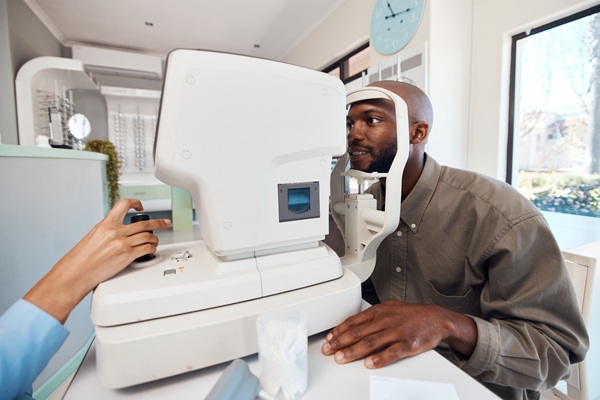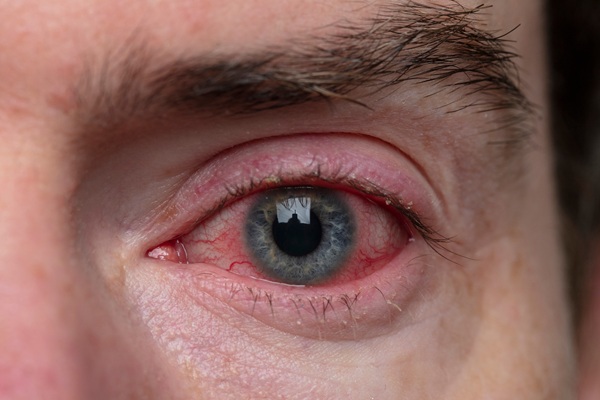What Is the Process of Getting Prescription Glasses?

Many Americans will need some degree of vision correction in their lives. Navigating the process of getting prescription glasses can be exciting and daunting, especially for those getting corrective eyewear for the first time. Whether or not you have a vision issue, it is important to undergo regular eye exams to monitor your eye health and any changes. During these appointments, the optometrist can determine if you need prescription lenses.
A step-by-step process to getting prescription glasses
1. Comprehensive eye examination
The process of getting prescription glasses begins with a comprehensive eye examination. Scheduling regular eye exams is an important part of maintaining overall eye health and detecting potential vision issues. During this examination, the optometrist will ask the patient about their medical history and vision. Then, the doctor will conduct some tests to evaluate:
- Visual acuity (sharpness)
- Eye alignment
- Refractive errors (clarity)
- Eye health
- Eye pressure
During the visual acuity test, the optometrist will use a phoropter—a device that contains different lenses. The patient will read a chart while the doctor adjusts the lenses to find the combination that provides the clearest vision. This process also helps pinpoint the specific refractive error, such as nearsightedness (myopia), farsightedness (hyperopia), or astigmatism, which will help the optometrist create the patient's personalized prescription.
2. Creating the prescription
Once the eye examination is complete, the optometrist will create a prescription outlining the precise lens power the patient needs to correct their vision. The prescription typically includes information for both eyes, specifying lens power, lens type, and additional features such as anti-reflective coatings or photochromic lenses. Some types of lenses include:
- Single-vision. Single-vision lenses help correct nearsightedness and astigmatism. These lenses help defend against digital eye strain, preventing eye strain and discomfort.
- Progressive lenses. These lenses provide a smooth transition from distance through mid to near vision. Progressive lenses give patients the most natural vision correction at all distances, helping them see clearly across a room or at a further distance.
- Multifocal lenses. While progressive lenses have largely replaced multifocal lenses, these lenses can correct two or more fields of vision and are divided by lines horizontally across the lens. They can include bifocal or trifocal lenses, which can help patients with nearsightedness, farsightedness, or immediate vision.
It is important to understand the numbers and abbreviations on the prescription. The sphere (SPH) indicates the lens power needed to correct nearsightedness or farsightedness. The abbreviation cylinder (CYL) addresses the issue of astigmatism. The axis specifies the orientation of the cylindrical correction, and the addition (ADD) is relevant for individuals with presbyopia, which is the gradual loss of one's eyes' ability to focus on nearby objects.
3. Frame selection
With their prescription in hand, the patient can choose frames that fit their prescription while complementing their style and facial features. An optician can assist them with frame selection. They consider the patient's face shape, skin tone, and personal preferences. For example, some prescriptions are too big to fit into thin, round metal frames compared to thick, square plastic frames.
4. Lens material and coating options
Selecting the right lens material is an important decision that can impact the overall performance and comfort of a pair of prescription glasses. Common lens materials include plastic (CR-39), polycarbonate, high-index, and Trivex®. Each of these materials has its advantages, such as lightweight design, impact resistance, and thinness.
In addition, opticians may present various coating options to enhance the durability and functionality of the patient's glasses. Anti-reflective coatings minimize glare and reflections, while scratch-resistant coatings protect against daily wear and tear. Another option is a blue light coating, which filters 10% to 40% of blue light from screens such as cell phones, tablets, and laptops. Photochromic coatings help lenses transition from clear to tinted in response to UV exposure, which can be convenient for those who do not want to carry a pair of sunglasses, especially if they frequently move between indoor and outdoor spaces.
5. Measurements and fitting
After the patient chooses their frame and lens selections, the optician will take precise measurements to ensure the glasses will fit after they are made (typically 1-2 weeks). The optician will measure the distance between the pupils (pupillary distance) to align the optical center of the lenses with the patient's eyes. Getting the proper fit is important for maintaining optimal visual performance and comfort. It can also prevent issues like eye strain and headaches.
When the glasses arrive, the optician will check one final time to ensure they securely fit on the patient's face without causing discomfort by being too tight or too loose. They can adjust the temple arms to loosen or tighten the fit if necessary. They may also adjust the frame's bridge to prevent slippage and ensure the lenses are in the proper position at the correct distance from the patient's eyes.
Call our office to get started
Getting a new pair of prescription glasses can be exciting. However, if it has been a while since you last got glasses or it is your first time, it can seem overwhelming. Our team is here to help make the process as easy and painless as possible. Call our office to learn more or schedule an appointment.
Request an appointment here: https://www.texasoptical.net or call Texas Optical at (214) 771-7333 for an appointment in our Dallas office.
Check out what others are saying about our services on Yelp: Read our Yelp reviews.
Recent Posts
Contact lens exams are fundamental to maintaining clear vision and promoting overall eye health. Many individuals rely on contact lenses for daily activities, sports, and social events, yet consistent monitoring of lens fit and eye condition often receives less attention than it deserves. An optometrist specializing in evaluating the cornea, tear film, and general ocular…
Red, irritated eyes can result from something as simple as fatigue or dryness. However, persistent or severe symptoms may indicate a more serious condition requiring red eye treatment from an optometrist. Understanding when those everyday symptoms become something more serious is key to protecting long-term vision and avoiding complications. Catching the signs early on and…
Vision health is an important part of your everyday life. When urgent and unexpected issues arise, you must seek emergency eye care from an optometrist. Whether the issue results from trauma, infection, or sudden changes, immediate attention from an optometrist can prevent complications and preserve your long-term ocular health.Individuals may need emergency eye care for…
A myopia optometrist can help manage and slow the progression of nearsightedness, especially in children and young adults. Nearsightedness, or myopia, causes distant objects to appear blurry while close-up vision remains clear. Without proper care, myopia can worsen over time, leading to higher prescriptions and an increased risk of eye health problems.Myopia occurs when the…


